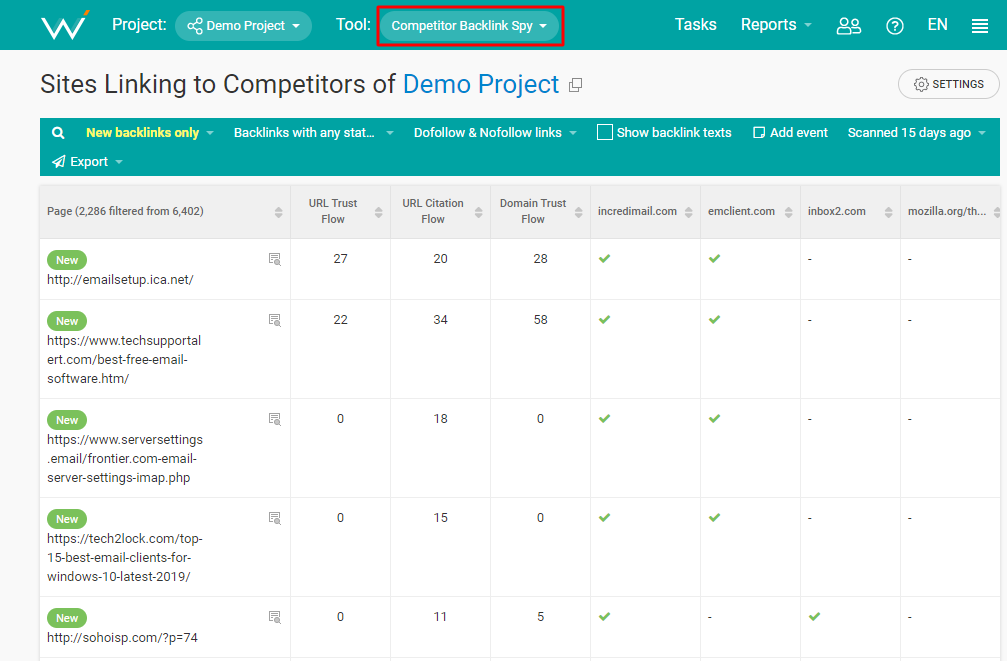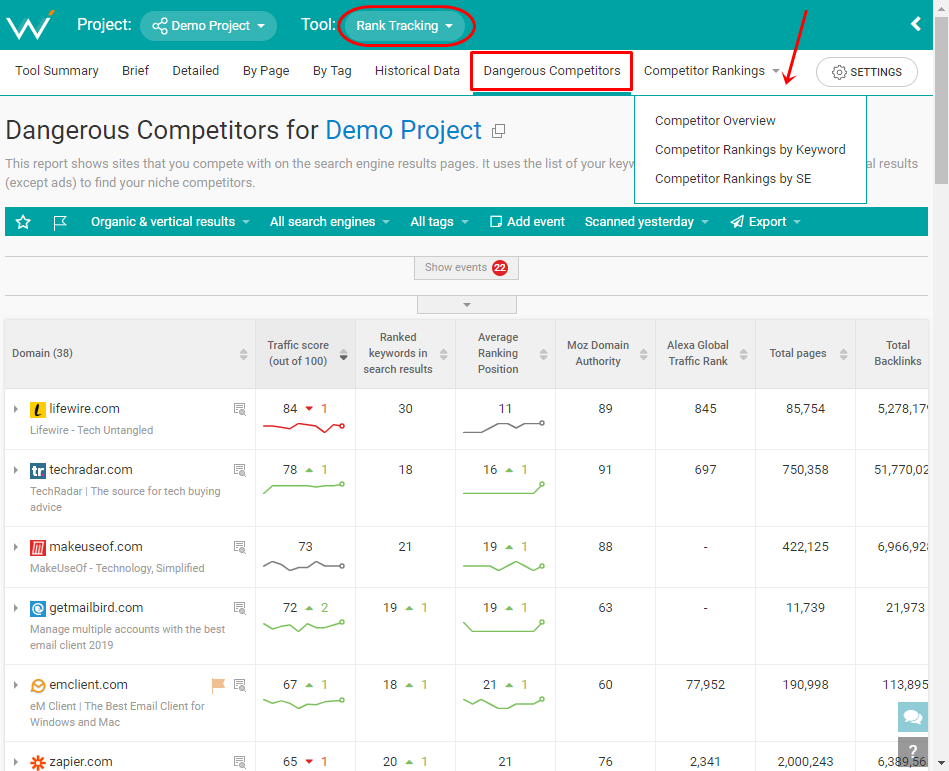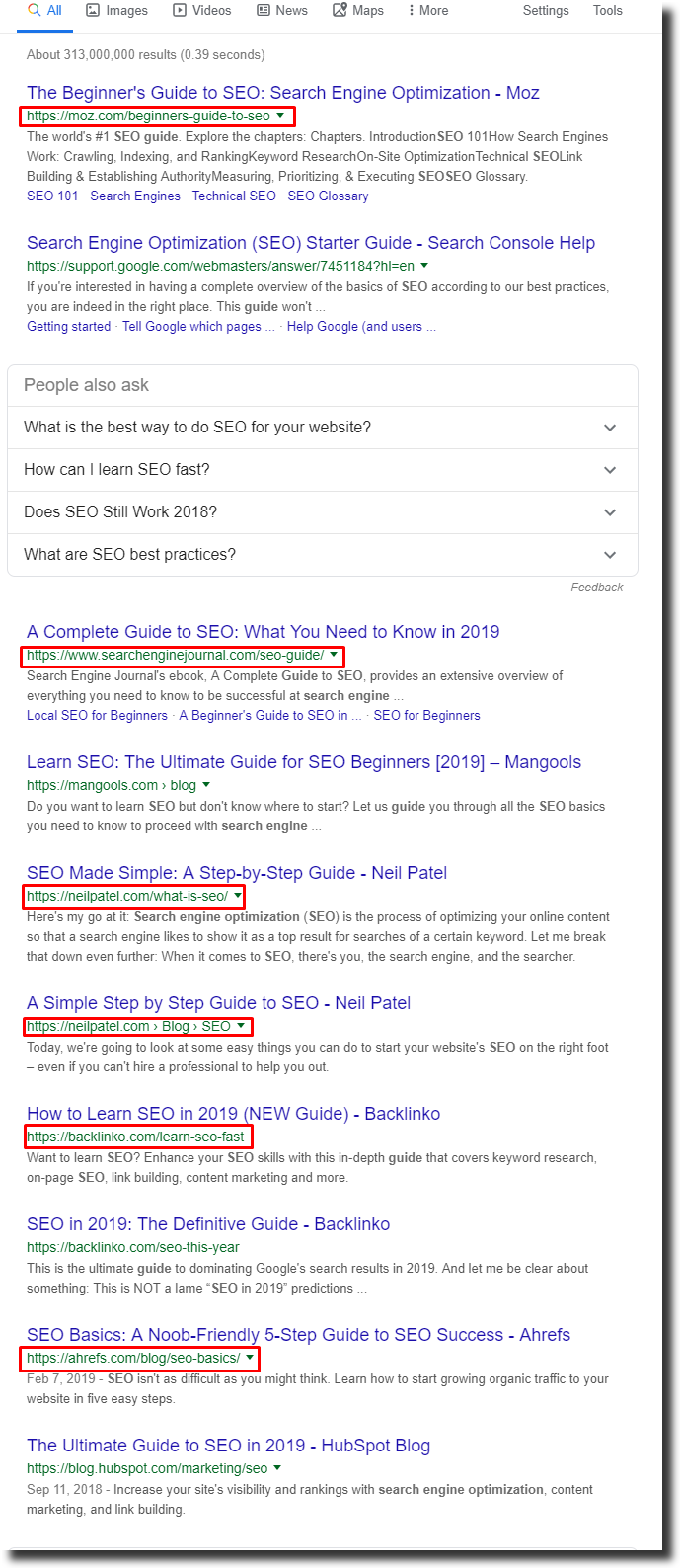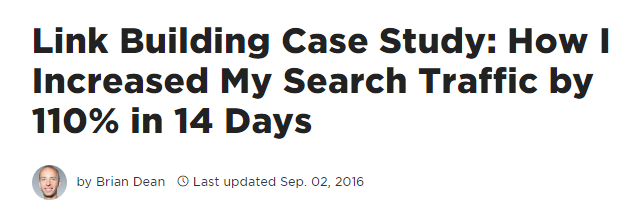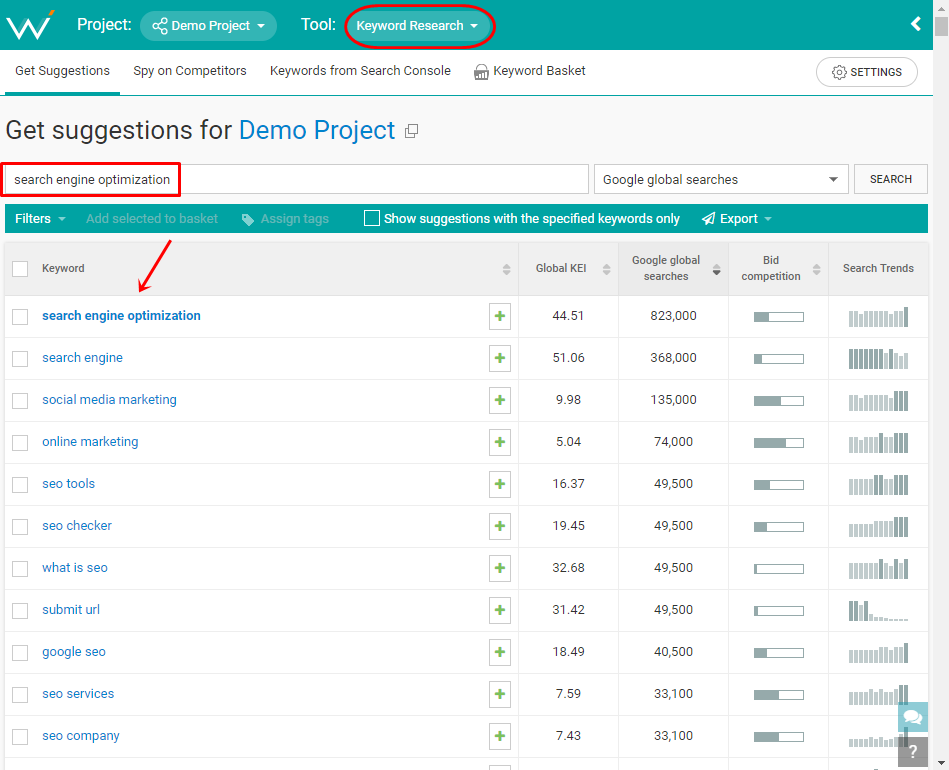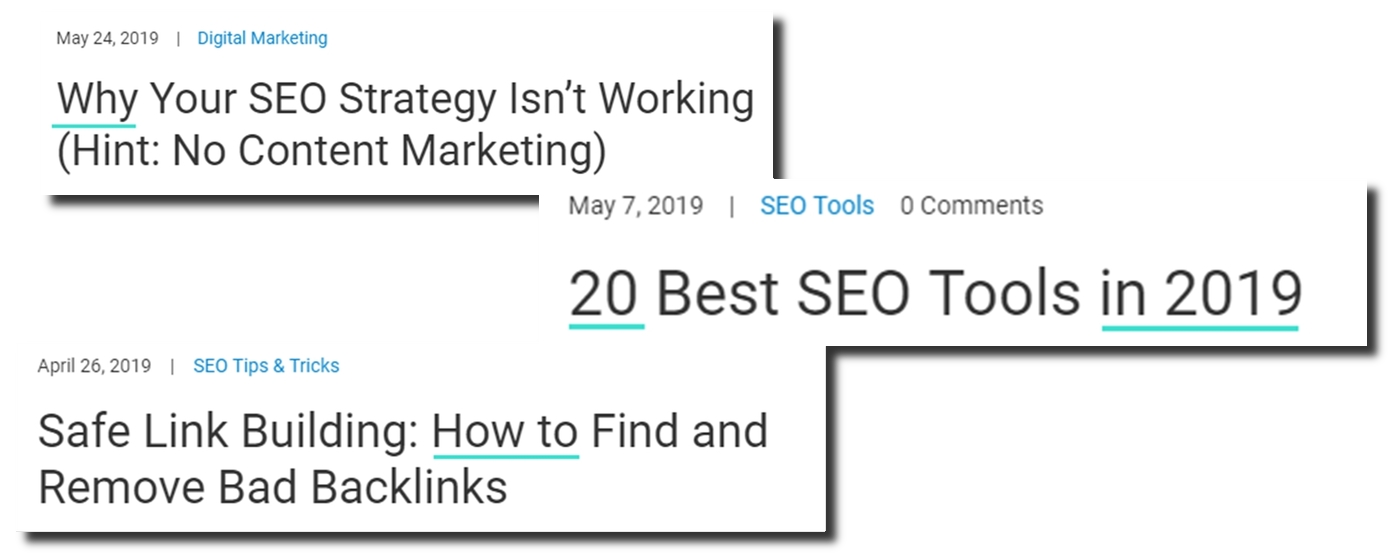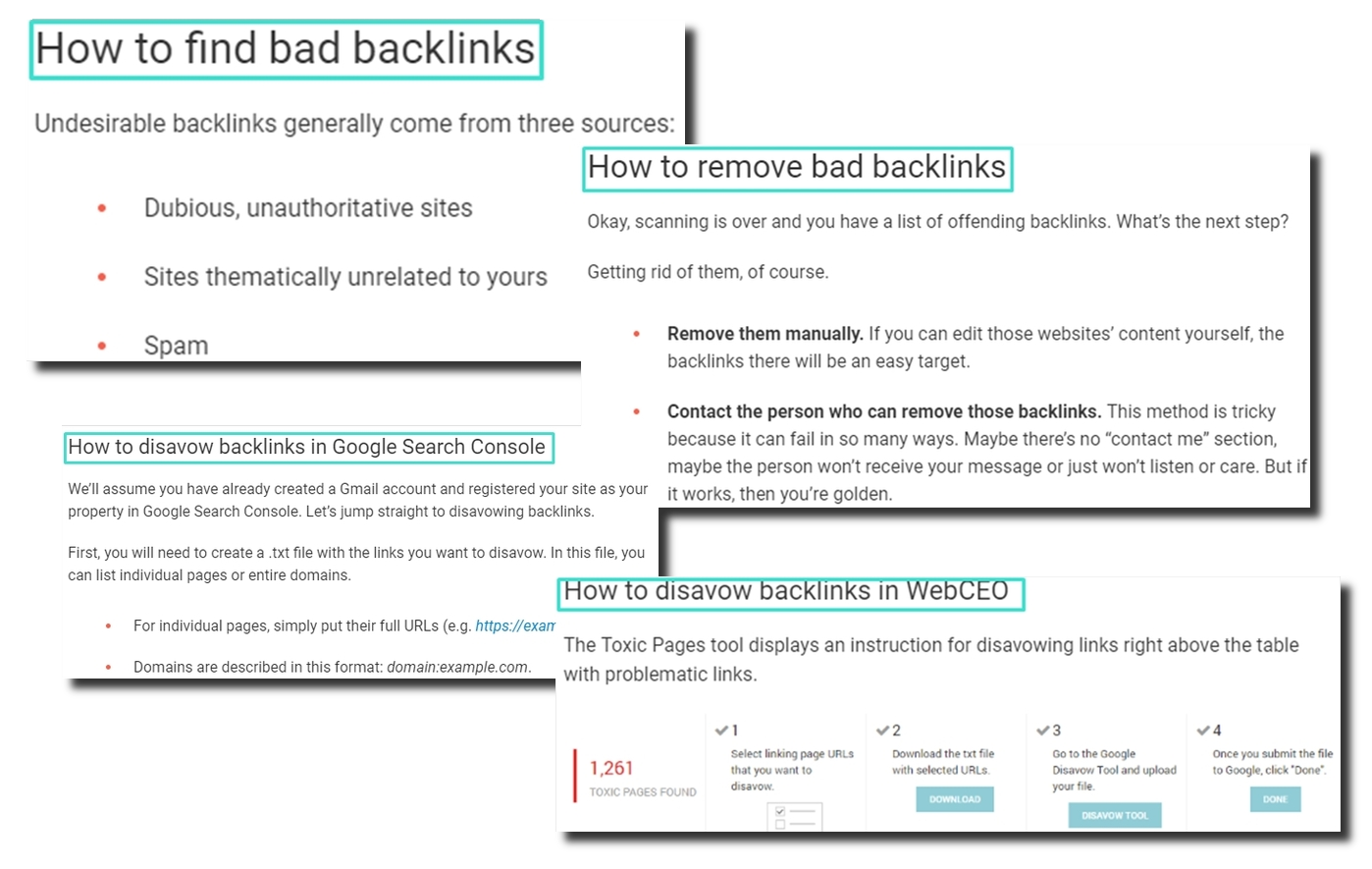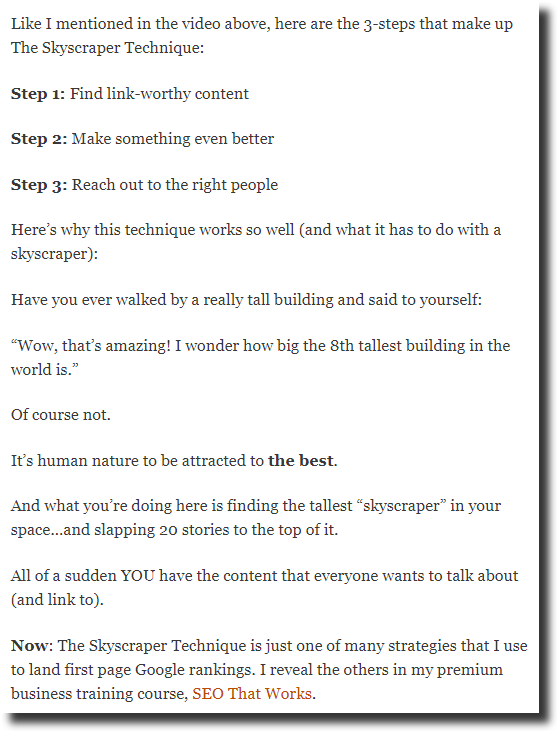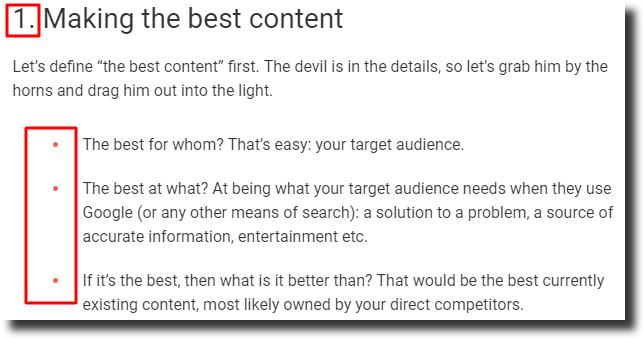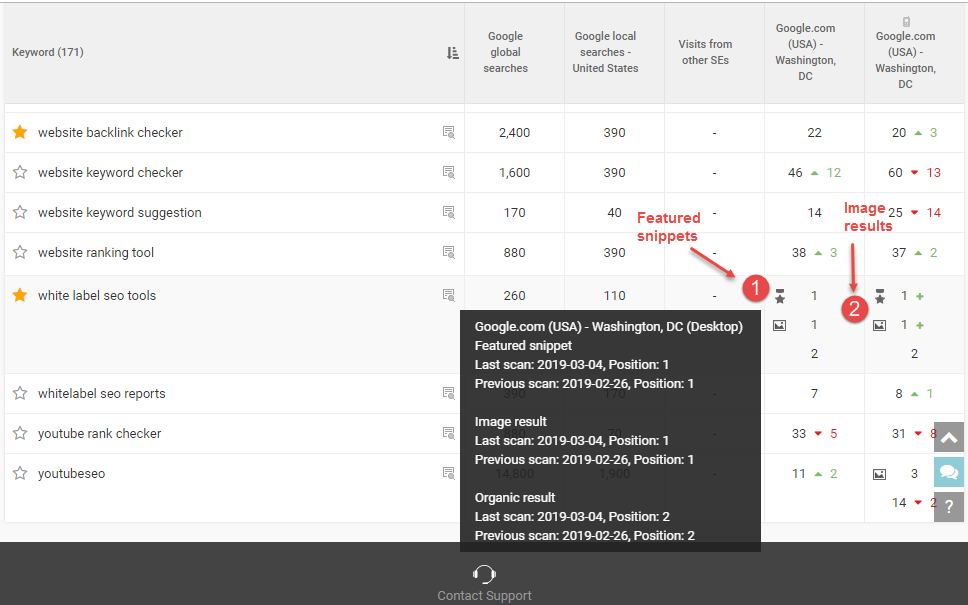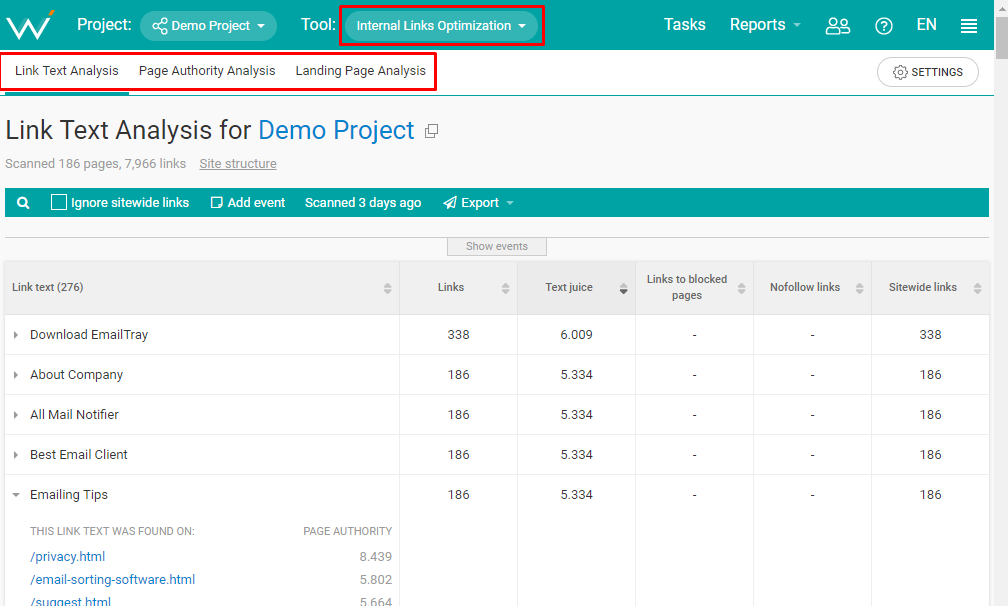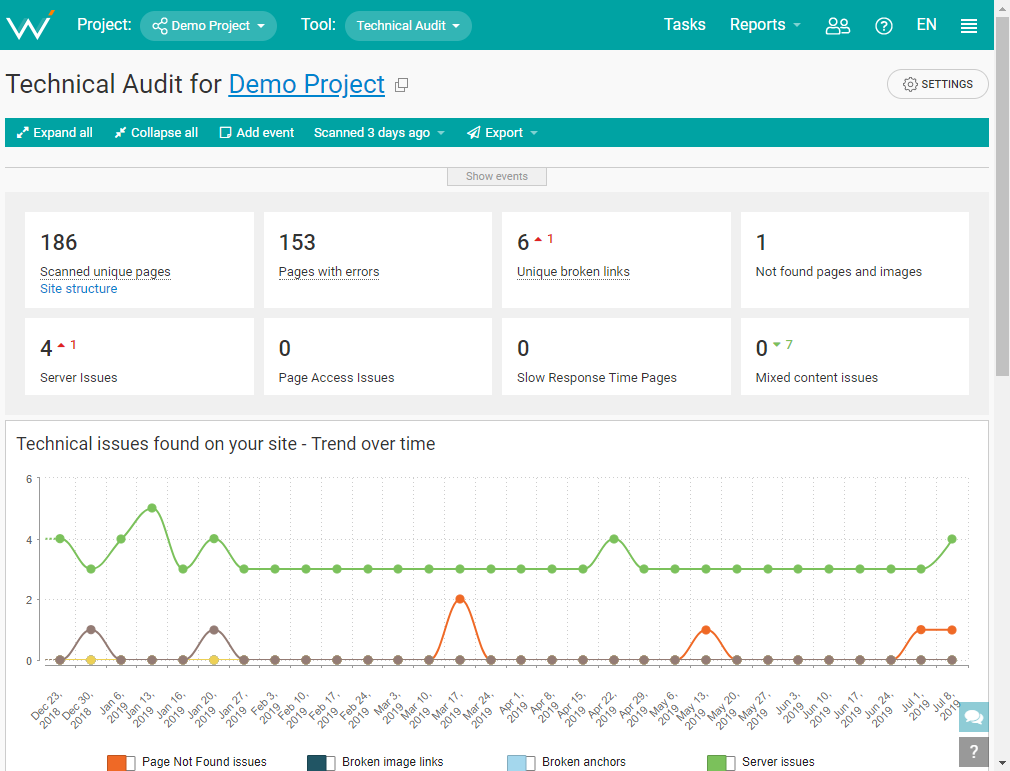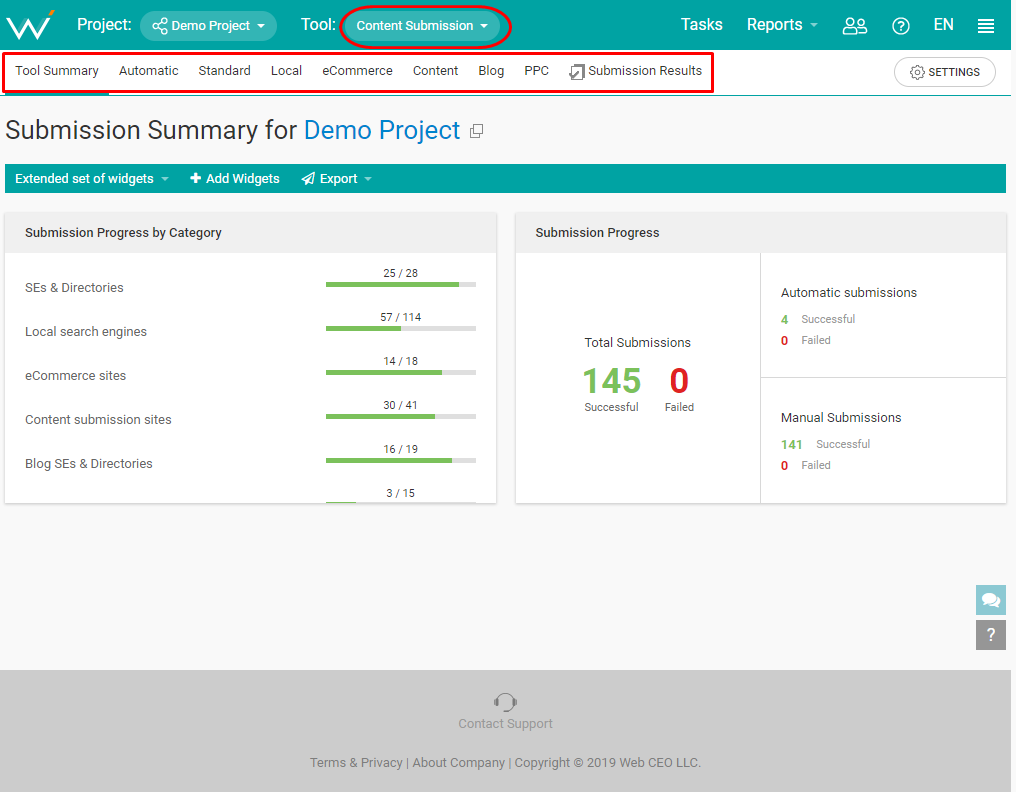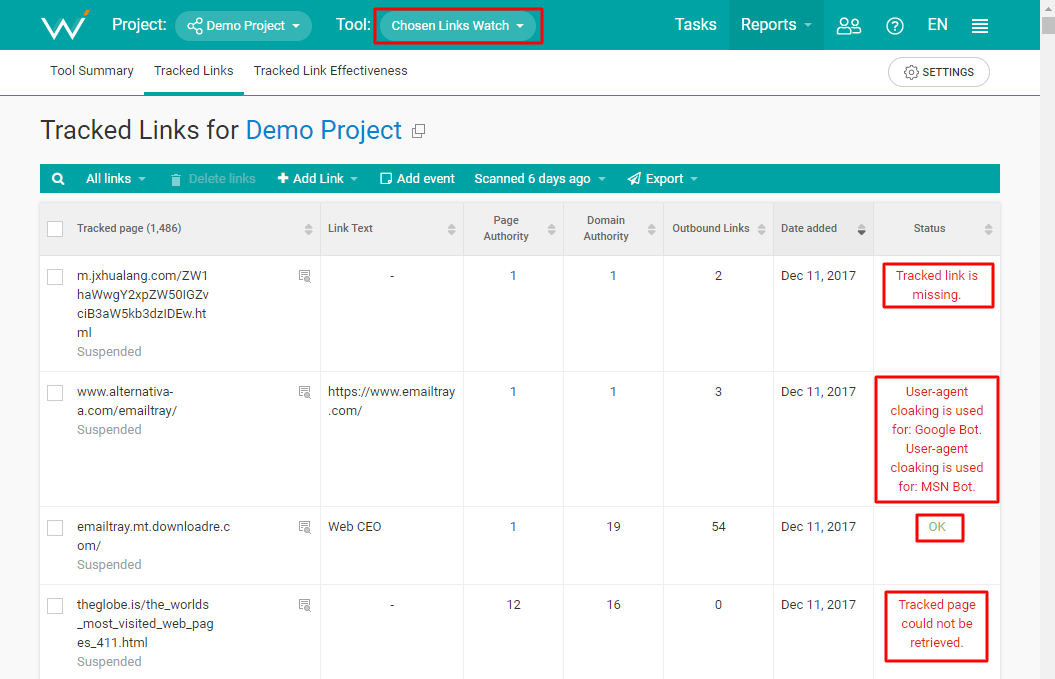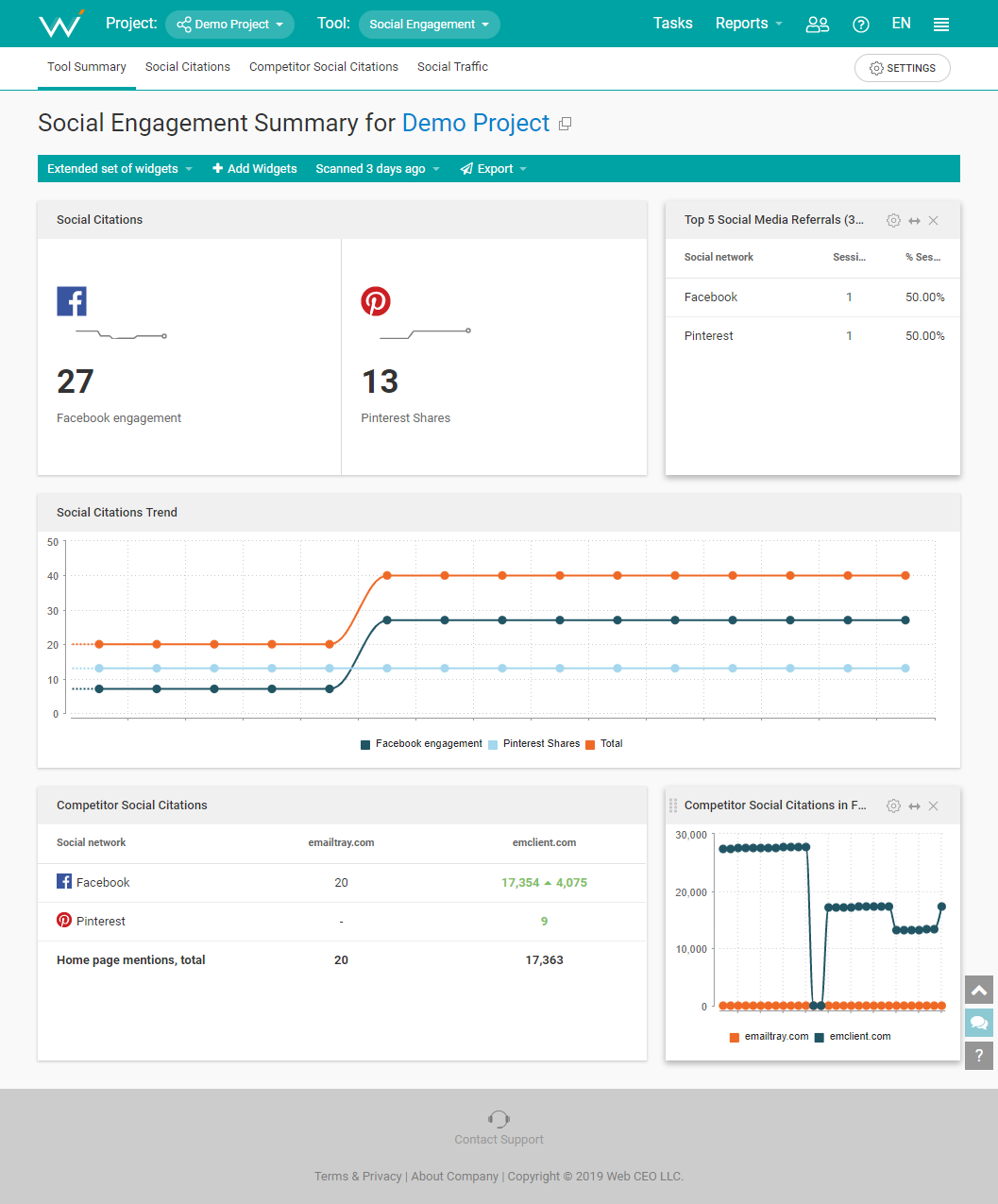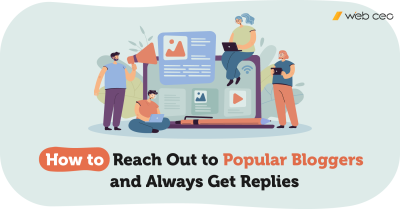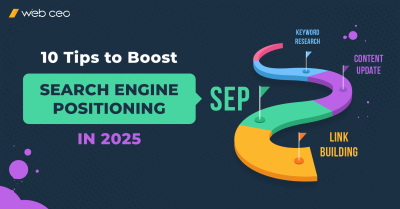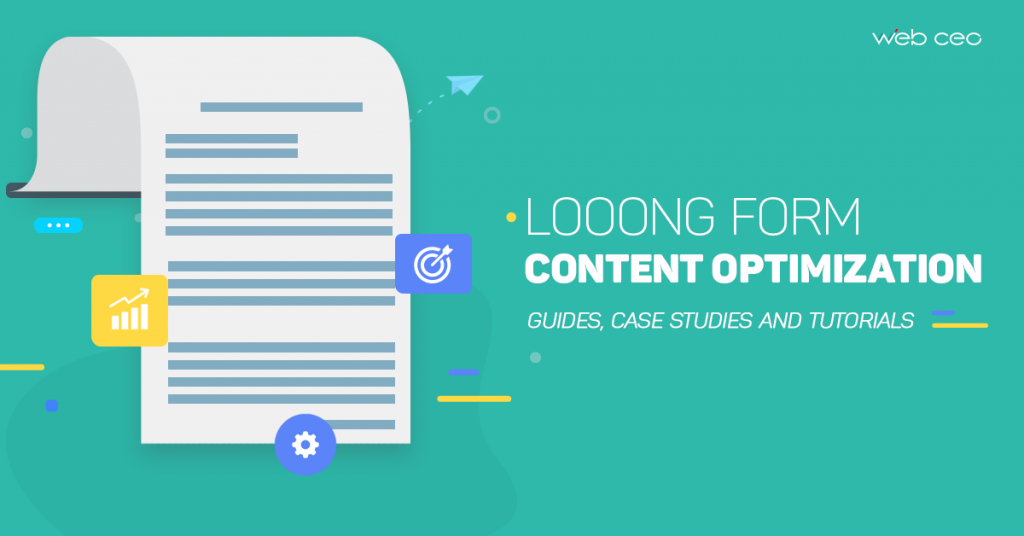
Long form content is that very thing which Google and searchers appreciate a lot and always look forward to see on websites they often visit. Webmasters with blog sections on their websites tend to maintain the performance of their blogs and sometimes go for “educational” long content writing.
Why is this so?
Simple:
- Long form content is believed to have more social shares;
- A work of large, comprehensive research is seen as more valuable and credible rather than a short post of 200-500 words. Actually, nowadays, a 500-word post is not even perceived as a post anymore;
- It increases your conversion rate.
Those reasons are already beneficial enough for you to pay more attention to long form content. The most popular of them are:
- Guides, which are always in demand not among SEO niche websites only, but in most spheres where it is possible to use this type of format;
- Case Studies are really inspiring “buddies”, which always raise enormous interest among readers, because they tell a story of somebody’s success or failure so you can learn something useful for your business;
- Tutorials took their place under the sun and have been guarding it for a long time already, being one of the easiest means for users to learn how to perform any kind of duty with step by step instructions.
However, it doesn’t matter how well written these types of content are, you should always optimize them adequately. You may write a brilliant, unique, and valuable article, and nobody will read it until you optimize it for search engines.
The process of long form content optimization is pretty similar to other types; however, it still has some peculiarities we are going to disclose.
TIP #1: PICK THE BEST FORMAT
[long form content types difference]
Before you start your monumental work you should make sure you have selected the right type of presentation. Nobody can write “Guide” in a description just because of a whim. A writer has to maintain important “prescriptions” for each type of content as each of them have their own rules:
- A Guide has two important features: fundamental and important. Since guides cover the most essential and primary points of a chosen topic, a writer has to be able to outline them properly. It is important to lead a potential reader from the basics to the top of a niche, explaining in a simple and understandable way enormous pieces of data. A reader should finish reading a guide with a feeling of completeness. It is really great when a reader has no questions concerning a topic you covered; if questions are still in the air – you did not so well, friend.
- For a Case study, must-have characteristics are: interesting and educational. If a writer has chosen a case study to investigate, it has to be entertaining and detailed. Moreover, a writer should be careful with cases he or she is going to choose from. Well known to the audience stories of success are not a great choice. Readers will not even click on “Continue Reading”, because they already know everything. It is better to write about an unknown yet pretty successful case, explaining which tactic was used, why it was fruitful, which cases it fits, and what cons it has. Case studies are beneficial, because if you do one properly a company may leave a link to your website on their page, enriching your backlink profile.
- Tutorials can be described in two words as well: simple and informative. Tutorials may be called “how-to-articles”. People go for tutorials when they can’t perform a duty and need detailed guidance. A useful detail about tutorials is explanations. Authors not only write what a reader should do in the simplest way possible, but also clarify why they need to perform this very step. That is the reason why tutorials have their piece of pie: readers appreciate a simple way of information presentation.
If you are a writer and thinking about a way to cover a topic, please, select the type carefully, because there are lot of dependent points which should be considered and revealed in your text.
TIP #2: LEARN FROM YOUR COMPETITORS
[how to out-do your competitors]
Whatever you are going to write, you will have to think about your competitors! What they write, how they write, where they promote their content – those problems have to be kept in mind if you want to achieve something with your text!
If you know what your competitors tend to write about and how they do this, it’s time to perform better and better! Write as if you are doing this for the last time in your life. Create content that is so engaging, people will not be able to survive not reading it. Spend as much time as you need for creating material of the highest quality. Put your soul in your writing and people will thank you for this!
Backlinks and traffic are the goals you want to complete. And there are means to make your way easier. Use WebCEO’s Competitor Backlink Spy and learn which websites have already found some value in your competitors and linked to them. Analyze the articles they linked to and figure out what would make the people there start linking to you as well.
Forewarned is forearmed! Having some knowledge about your competitors and their weak sides, you will be more prepared for taking next steps.
TIP #3: DO COPYWRITING LIKE A PRO
[how to present information depending on the type of long form content]
- HOW TO WRITE A GUIDE
The first thing a writer should think about is content. It should be of the highest quality and meet all reader and Google requires in terms of relevancy, uniqueness, authoritative sources, safety links inserted, and language. Your modus operandi should be pretty simple: write better and then get more traffic, backlinks, and unique visitors.
The second thing a writer should think about is the prospective audience’s level of knowledge: whether a guide will be written for a professional or for a beginner. This is important because of the depth of research you are going to do. You can write for a beginner and avoid deep diving into each side of a chosen theme, outlining only essential parts. To the contrary, you can write for a professional and avoid the basics and explanations of the simplest details, because your readers will already know them. For such an audience, you won’t need to waste your time.
The third thing a writer should think about is purpose: guides are written in order to help people to comprehend a sphere or specific side of the sphere which is absolutely new for them and, accordingly, difficult at the beginning. It will not be a great decision to turn off your readers with academic content full of strange terms, complex sentences, and enormous information fragments. Be simple yet educational.
The fourth thing a writer should think about is demand: don’t try to get more traffic by taking the most popular topic for a guide. Yes, guides for beginners will always be popular and highly demanded. However, if you are only starting your way in a specific popular niche and want to introduce yourself decently, do not presume to be on top of the subject matter more than many of you readers, after just a few minutes of research.
The fifth thing a writer should think about is competitors. A simple way to find them is WebCEO’s Rank Tracking Tool which helps to identify your dangerous competitors and shows their rankings:
Let’s take Search Engine Journal, Moz, Ahrefs, Brian Dean, and Neil Patel as examples at this point. Their guides will always be on the first page of the Google SERPs, because:
- they already have high authority as experts in their field;
- their guides are already a great example of full optimization;
- they often hit the nail on the head with their advice.
On already popular topics, you will need to ultimately write better content than your more established competitors for the topic’s keywords.
Think about topics which haven’t received enough attention yet but are still in demand, although not so high. Write about them and get your piece of pie, step by step building your audience and popularity. Don’t forget that every Jack has his Jill.
- HOW TO WRITE A CASE STUDY
The first thing a case study includes is analysis. While writing a case study, a writer has to remember that this is not a simple article where he or she is just describing how things went for a company. No. The analysis should be done. A deep and comprehensive investigation should be part of the writing process. It should also be proven by stats and trustworthy sources, because you must not pull material out of thin air.
The second thing a case study must include is a great story. We are sure readers are already tired of learning about industry giants for the tenth time. Companies and people who are already at the top can be boring subjects for those who have been saturated with content about them. In such cases, you must have a new or even controversial angle. Or you can write a case study of a company or organization that has not been covered much yet. It may even be your own success story which will serve as an extra advertisement for your business. Look at Brian Dean, who has shown how he achieved his own traffic boost! Great success comes with great stories.
The third thing a case study must include is a plot. After choosing a story to consider, you have to play it. Nobody wants to read about a company that was successful at the beginning and became even more successful after applying a new strategy. Boring. You will be better off choosing a story of a real boom in the industry, i.e. a company that experienced really tough times before dramatically changing its strategy. That type of story is more interesting and raises more trust and emotions in a reader.
The fourth thing a case study must include is statistics. A case study goes hand in hand with figures. People may find your content exciting and well written, but they would also like to see a clear confirmation of your words. Here a writer needs some statistics to persuade a reader that the case study is about something that was successful. Be sure to mention the time period within which everything was accomplished:
The fifth thing a case study must include is instructions. We can also call it a to-do list. This means that a writer not only writes a story of someone’s success, but also applies explanations concerning each step the company took to get results. The consequences and potential losses from contrary decisions will also come in handy for a reader who may take your case study as a role model for his or her business.
- HOW TO WRITE A TUTORIAL
The most necessary aspects of tutorials are understanding and accuracy. In order to write something about a chosen topic you should understand it cover to cover, as well as the consequences of wrongly taken steps. Otherwise you may just waste your time and write something of low value. And you don’t need to do that. Study a topic you are going to write about deeper, check all the various aspects, and only then start to create your content.
The next necessary aspect of tutorials is simplicity. People look for tutorials to comprehend things they don’t understand simply and fast. And if they see an article written in a difficult manner which recalls standard instructions, don’t expect high traffic and visitors returning to your website. Discuss difficult topics in the simplest way.
Another necessary aspect of tutorials is usefulness. A writer may write an excellent tutorial regarding an old TV model’s settings, with beautiful pictures and simple explanations. However, will it be useful when people are watching only Smart TVs? Think carefully about your topic and take into account its demand and potential audience.
The fifth necessary thing about tutorials is length. A big tutorial is okay when we talk about a really huge and tough topic, however, in other cases try to make your article of a standard size, outlining only the important points. People tend to leave a page if they see that they will have to continue reading for a long time.
A common thing for all three types of long form content is target audience identifying. Any writer has to know for whom he or she creates content. This is rather important because of the style of writing, topics disclosed and the chosen niche. When you consider a certain type of person you are going to write for, the odds are you will prepare a more engaging article, which will attract more of your target audience and increase traffic to your website.
Learn your current audience, its age, nationality, location, occupation (if possible), lifestyle, interests, and so on. Google Analytics is a valuable help for you in this case.
After you learn how to write different types of long format content, we can go to the next tip.
TIP #4: SEO
[how to optimize long form content]
- KEYWORD RESEARCH
Keywords are essential for your existence on the Internet. Conduct this research properly, take perfectly matched keywords, put them in your article, and wait for results. Making the wrong choice of keywords can relegate you to the dark corners of the Internet and you’ll never see the sun on the first page of search engines.
Why do keywords always play an important role in your content optimization?
Basically:
Without them your website, and specifically your article, will be invisible to searchers even though your content may be relevant to their queries! In other words, keywords are responsible for your presence in front of searchers’ eyes.
Results of bad keyword optimization:
You will get lost.
Proper keyword optimization leads to:
Traffic -> Better rankings -> Better organic search result positions.
WebCEO’s Keyword Research Tool is always beside you to help at any moment and find you the best, most winning keywords in a niche your content belongs to.
N/B: Pay attention to long tail keywords and their synonymic analogues. While short tail keywords are not so specific and may belong to several niches at the same time, long tail keywords lead to a particular sphere and outline only places where you can find information which fully meets a search query’s needs.
- STRUCTURAL COMPONENTS AND THEIR FORMATTING
1. Headings
Each type of long form content, whether we speak of guides, case studies, or tutorials, MUST have a heading which is bright, interesting, and disclosing the sense of the content below. It is also important to use a keyword in it so a reader will find you faster and see a match to his or her query already in the Title (seen in the SERPs or in the page Heading! Don’t forget that your heading must be relevant to the content you are going to enlighten; otherwise Google will not be happy about you.
A piece of useful advice: use figures, how-to combinations (extremely successful with tutorials), or questions in headings. For the first variant, this may be the year in which your article is topical, the general number of tools/goods/etc., percentages or general statistics:
2. Subheadings
Subheadings are useful details which will sort out the material you present and drop it into smaller pieces for the sake of convenience. With subheadings, authors outline different semantic parts of the whole article, which also may be of a reader’s concern. It is better to optimize them as independent headings. Put keywords in your subheadings, make them bright and at the same time simple – relevant to searchers’ queries.
For example, here is a really great way of using how-to’s in subheadings which can easily be used as search queries:
3. Paragraphs
First, don’t make paragraphs huge. Small paragraphs with only essential material will bring you more success than enormous units of non-filtered information which people will not even read. Long form content is, by definition, a vast amount of new knowledge, all in one place. Your mission is to make this easy to consume.
Second, paragraphs contain a lot of important information which should and can be optimized not only for ranking success, but also for readers’ convenience which leads to a low bounce rate:
- Sentences: guides may make you write really long and complex sentences depending on the chosen topic, but try not to do this. First, this makes it difficult for a reader to understand the material quickly. Second, long sentences are boring. Of course, there are cases when you can’t be rid of them just because. However, try to split them. A perfect example of such writing model is Brian Dean. Look at this:
Source: https://backlinko.com/skyscraper-technique
Simple, short, yet highly understandable and informative. Even bright, I’d like to say.
- Bullet and numbered lists: readers like them and we advise you to like them too. They help people to pay attention to really important information. Since a guide’s goal is to teach readers, they are perceived in the category of “needful things”, because our eyes see information presented this way as critical. Therefore, readers will catch things easier and remember better. In tutorials, such lists are inevitable as they outline steps to perform;
- Bold, italic, or underlined words or even parts of sentences help a lot during diagonal reading, which is rather popular nowadays. By doing such formatting, a writer outlines parts which are crucial for understanding so the readers will keep them in mind for the sake of further learning;
- Since the above-mentioned formatting is used really often, there are also other ways to properly optimize useful pieces of data for a reader: words or parts of sentences of different colors, and, if it is possible to do on your website, – highlighted text;
4. Type of format
You should decide on the overall format you are going to present your content in: whether it will be an html- or a PDF-article.
An Html format may not give you many variants for designing your text, however, one can read it any time via browser. Also it is easier to “walk” through links if they are inserted in your article.
A PDF-format is not so mobile and comfortable for reading on mobile devices. However, you may design them as you like and readers can save these documents on their desktops or laptops for offline use, which can sometimes be really convenient.
- VISUAL MEDIA
Visual media always makes your content brighter, more interesting, and multifaceted, because different types of visual media may present various sides of data. If your article is filled with something besides plain text, your readers will appreciate this a lot.
Images, screenshots, gifs, and infographics fit any form of content, especially if we are talking about schemes and step-by-step tutorials which need some helpful arrows, circles and so on. They will definitely take your content to a higher level and help people to relax while reading. Infographics are a great match for tutorials and guides, if a process/topic you are going to describe may be transformed into this type of content.
Videos will come in handy for case studies especially. If you have done an interview with the CEO of the company you are going to write about, by all means add this to your article without hesitation. This will make your text even more trustworthy. Also videos are really useful in tutorials, where you can show necessary processes.
With audio files you should be careful, as people are less likely to listen to that. So make sure that your article is full even without the audio.
One more advantage of visual media is they garner important vertical search results! If you optimize your visual media, you will have a chance to be seen in the Google image carousel or as their video selection for the first page. This will bring more traffic to your website! You can easily discover your vertical search results rankings with WebCEO’s Rank Tracking Tool. Besides, with this tool you can also learn if you have been chosen for a Featured Snippet!
- LINKS
It will not be a surprise if you decide to insert links to your article. These may be internal links or those which lead a reader to an outside source. Always remember that links also have an impact on your website positions! Never insert links from untrustworthy, spammy, or suspicious sources. This advice will protect your website, because bad links may cause harm to your website or disturb your visitors. Do your best and work only with the best.
If you are going to add a link which leads to a related article on your own website, make sure that it is not broken and relevant to the keyword rich anchor text you write for it. This will be beneficial for your older articles, bringing them more traffic. You can easily learn everything about this with WebCEO’s Internal Links Optimization Tool:
and Technical Audit Tool:
If you are writing a case study don’t miss a thing: leave a link to a company’s website. Readers should have an opportunity to check everything by themselves and be sure that you are writing about an existing business. That business will notice you gave them a backlink.
If you are writing a guide with someone else’s statistics, if you mention somebody’s works, or if you quote somebody’s words directly, leave a link to the source you used in order not to violate GDPR rules and possibly perturb your audience.
In tutorials there are a lot of possibilities regarding links:
- a writer can place links to relevant products readers can use if we are talking about external links;
- a writer can insert links which lead to related articles, or those which lead to material on a website a reader should know about.
- SNIPPET
Snippet optimization is important both for long and short form content. On the front page of Google, a reader can discover a short description of the content you provide, making it very likely that only your relevant target audience will click further.
To optimize your snippet properly, you should think about the following components:
- Title tag: the first thing a reader looks at in the SERPs themselves! Remember the part about heading optimization? While the HTML H1 tag is usually the headline people see when they go to your webpage, the Title tag is what they see as the header for your page in the search results. Time to use: keywords, statistics, numbers, questions, and how-to’s;
- URL: if a URL copies your title, that is even better, because Google outlines words from a searcher’s query in your snippet to show that this is exactly that thing he or she was looking for;
- Meta description: this is what people see in the search results below the Title of your webpage. Write a short yet informative description about a chosen topic, so readers will get a synopsis of the content they are about to click on and not bounce later.
Well optimized snippet:
- CTAs
The hardest part in the content optimization process is maximizing the number of people who respond to your “Calls to Action.” CTAs must be bright, catchy and short: up to ten or twelve words which should make a person your permanent visitor. The design of a CTA should attract the attention of a reader so he or she will have a desire to, for instance, subscribe. This requires some brain storming on your part.
Remember that your CTA is not just an invitation. This is a highly beneficial offer for a reader to accept with pleasure. Those benefits may be free future guides, presents, discounts (if you sell products or services), and so on.
TIP #5: Promotion
[how to promote your content properly and make it go viral]
The main purpose of your content promotion is to get more backlinks, thus increasing traffic and heightening your website’s domain authority. There are actually plenty of ways you can use to promote any type of format.
The first way, which you can successfully apply, is to conduct various link building strategies. In the case of long form content you can freely use:
- the Skyscraper Technique, which will also help you to beat your competitors by providing superior content they already got backlinks for and getting those backlinks replaced or augmented in your favor;
- build links from broken links, if you know that there is a website with a broken page you can replace with your own;
- your case study may be perfect for guest blogging on a website with higher authority than your site has;
- if your tutorial includes an infographic, bravely complete this and offer to another website in the same niche;
- you can use an interview trick: for example, for your case study you can interview a director from a company chosen and then ask them to leave a link to your study on their official website;
- your case study may fit Connectively; just go there and learn if there any journalists who would like to use your material;
- a link round up on a popular and authoritative website can bring you much success, however, your content has to be of the highest quality;
- you can leave a link to your article on relevant blogs and forums, describing how deep your research is;
- You may have friends who can place links to your site on their website;
- WebCEO’s Content Submission Tool is always ready to suggest and send you to authoritative places where you can submit your material:
You should keep track of your links in order to be sure they weren’t eliminated or their anchor text wasn’t changed. For this you can use WebCEO’s Chosen Links Watch Tool:
Social Media Promotion will always help you to spread your material faster than anything else can and there are a lot of ways to perform this. However, you will not be able to complete this with an unpopular or empty account. You may create a really great post with a bright image, but nobody will pay any attention if you are a newcomer without followers. So make sure you follow lots of relevant people after adding fascinating posts, engage with them and keep track of your performance and regularly update your timelines and profile content.
Ask some successful representatives of your niche to promote your content. You can possibly offer something in exchange. Maybe you can offer to let them guest post on your site or you can offer a backlink to them on your website.
You can use Facebook for a successful promotion. Join groups which are connected to your sphere of activity and then promote your content. If there were any group posts that are related to your content, you can put a link to your own content in the comments section, briefly describing the main points. Also, if you have used any materials or pieces of information for your research, which you attributed in the post itself, you can tag those people who were among the sources. They will pay attention to your article and make you glad you gave them a shout out! They will likely give you a shout out from their social media accounts as a result. Do not forget about hashtags, with which people can find your work in platform searches. And don’t forget to have all your colleagues and friends share and like your social media posts which link to your content.
Track your results and social media engagement with WebCEO’s Social Engagement Tool. Always be aware of your social media performance.
IN CONCLUSION, long form content is always in demand. Deep and comprehensive research is always popular among users and is rewarded by Google. Devote your time and effort to create something valuable and unique in order to bring more traffic and extend your backlink profile with juicy backlinks.
It’s high time to start your journey with by analyzing your competitors’ backlinks! Don’t waste your time; use WebCEO’s Competitor Backlink Spy!
